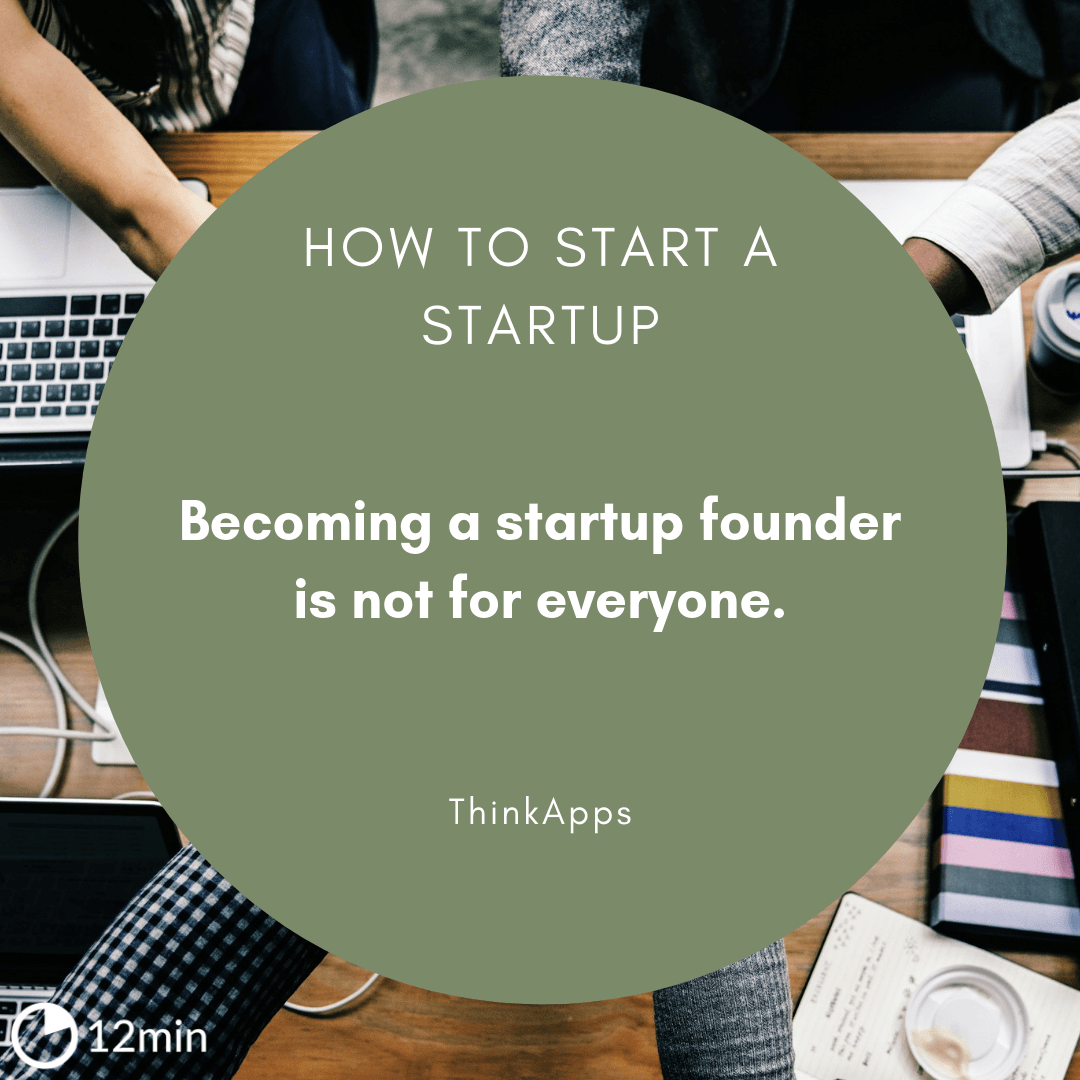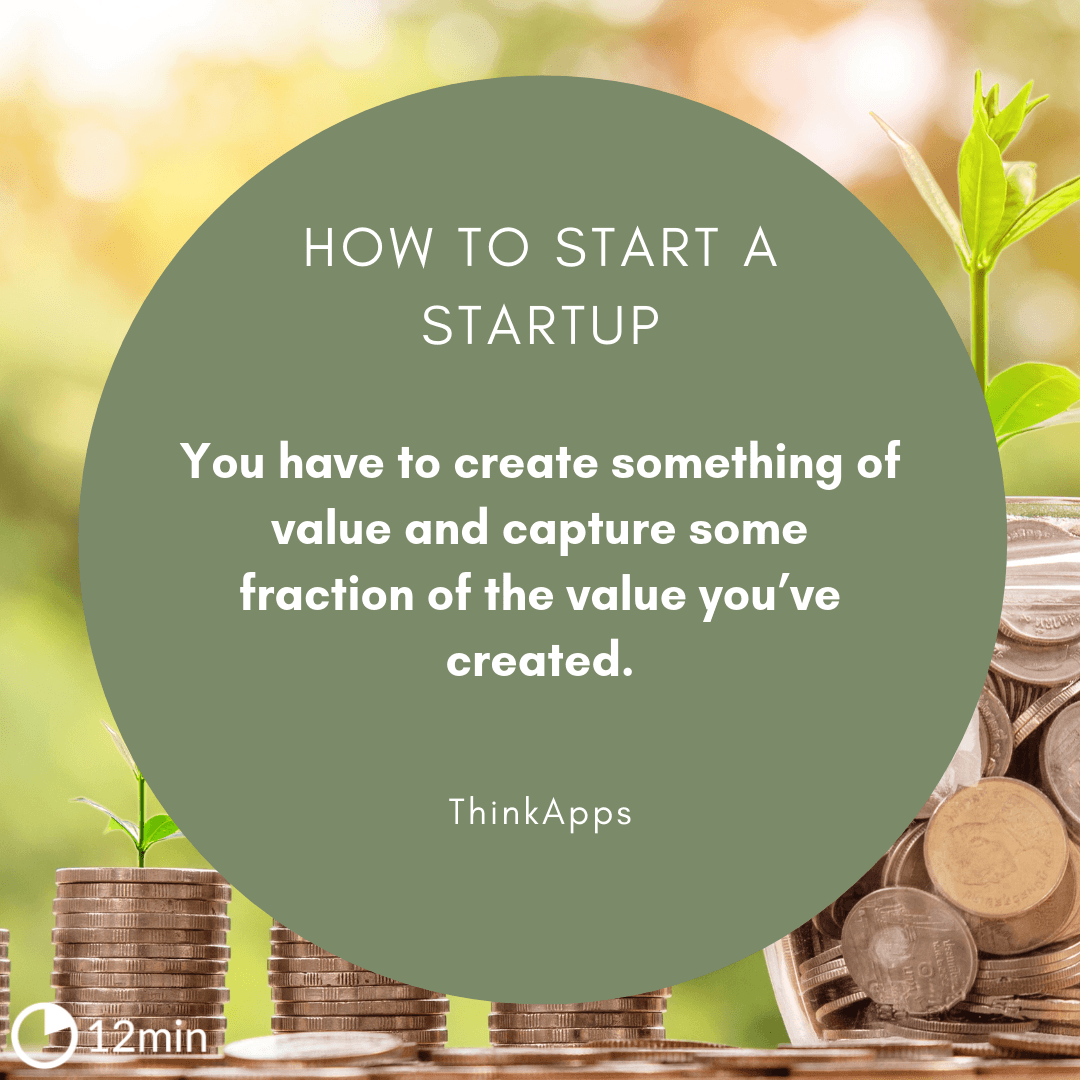How to Start a Startup Summary
8 min read ⌚
You know how you sometimes highlight interesting parts of a book? Well, my version of ThinkApp’s How to Start a Startup barely has any non-highlighted sections left. It’s a treasure chest of tips and ideas to help you make your own startup successful.
How to Start a Startup is based on a Stanford University course of the same name, taught by Y Combinator president Sam Altman.
For the novice entrepreneur, this book provides you with a quick and valuable overview of a startup, while massively increasing your chances of success at the same time.
INCREASING SUCCESS / HOW TO START A STARTUP
There are no shortcuts in starting a startup.
“How to Start a Startup PDF Summary”
For the experienced entrepreneur – you might think you know all of this already. Even if you do, being reminded of the concepts will make you a better entrepreneur. This book will provide you with some great nuggets and eye openers.
Split into 8 parts, How to Start a Startup approaches the main concepts related to real entrepreneurship:
- Early days, or how to lay a solid foundation for your startup
- Leadership as a twin brother for entrepreneurship
- Building products your users will love, instead of building strategies by peeking into the competition’s backyard
- Reaching your audience like a pro, with self-confidence and the right words
- Fundraising, with a step-by-step guide to minimizing your risks and maximizing your chances of achieving your goals
- Hiring as a key part of your mission
- 3 essentials for scaling your startup
- Parting words on what happens after your startup is off the ground
After reading this book, I was anxious to share some brilliant ideas with you. On the other hand, I don’t intend to spoil the true magic of it, because reading How to Start a Startup is a MUST.
So I decided instead to take you on a smooth journey through those 8 parts, to draw your attention to some actionable tips and delight you with some of its greatest nuggets.
Early days. Those are the most important ones. Why? Because in the early days, we set the foundation for success.

Being an entrepreneur doesn’t mean spending most of your time working from beaches whilst having fun. It’s a hard journey that’s not right for everybody.
You should only start a startup if you feel compelled by a problem and think that building a company will solve it.
According to Altman, the first two things you need in order to maximize startup success are:
- A great idea
- A great product
Many people say that great ideas are a dime a dozen. But I disagree. Maybe bad ideas are a dime a dozen, but good ones are hard to find and even harder to execute. And execution is just a subset of ideas.
If your startup succeeds, you’ll probably work on it for another 10 years. So make sure it’s an idea you’re passionate about. Or, in the book’s words:
Passion comes first and the startup second.
In order to build a great product you have to show it to users, get user feedback, and make a product decision based on your findings. And then repeat.
So if you decide that building a startup is for you, keep on reading. Or as Paul Graham (an entrepreneur and one of the co-founders of Y Combinator) advises us in the second chapter: “Never Stop Learning”.
You should mainly focus your endless learning process on users because what you really “need to succeed is not expertise on startups but expertise about your users.
But knowing your users is not enough. A true challenging phase is to know and improve yourself. In order to take your startup to the next stage, you must become a real leader.
In the second part of the book – Leadership – you can learn from LinkedIn’s Reid Hoffman “How to Be a Great Leader” (chapter 4). I’ll give you some clues about Hoffman’s approach:
- Multiple founders for one startup means multiple chances to brainstorm key ideas.
- Carefully choose the environment for your startup. For instance, starting your company in the Bay Area of California is not always the best decision. Not all companies thrive in that environment.
- Stick to your vision and “stay focused on information that’s aligned with your vision”.
- You have to know whether or not you’re on the right track. Not the generic track from the old adage, but your own “right track” – your investment thesis.
A true leader makes things happen naturally, by themselves. I bet this part really drew your attention. So, stay tuned because chapter 5 is about “Operational Insight: How to Build a Company That Can Manage Itself” and features Keith Rabois, a former PayPal, LinkedIn and Square top executive.
You have to have some processes in place to make sure your output is intelligent, clear, and consistent. Simplify, clarify, allocate resources, ensure a consistent voice, delegate and edit the team.
You have to create tools that enable people to make decisions at the same level [as] you would make them yourself.
There comes a point where the brainstorming has to stop so the actual creation can begin.
So, it’s time to start building a long-lasting product. And when it comes to building products (part 3), there are 5 main things you should keep in mind:
- You have to build products users love. Wufoo founder Kevin Hale shows you how to do just that, by seducing your customers through each interaction and involving every member of your team in customer support.
- Focus less on competition because, as the contrarian billionaire Peter Thiel shows: competition is for losers.
We need to stop overvaluing growth and undervaluing durability. Everybody wants to have a huge breakthrough in technology – a eureka moment. But unless your breakthrough is the final breakthrough, you won’t last.
- It’s not about the things. It’s about the users. In chapter 9, Jawbone founder and CEO Hosain Rahman tell us about “Designing Hardware for the Internet of Things”. Rahman says that Jawbone doesn’t see itself as a hardware or software company, but rather an experienced company.
- Keep an eye on the WHYS. Another key point in building any great product is that it’s all about the whys:
- Why are we doing this? 
- Why does this exist?
- What problem does it solve?
- Ask yourself: should you build for the enterprise?
Box founder and CEO Aaron Levie show us that:
Enterprise startups will generally see a more incremental, stable growth rather than a viral boom.
Any entrepreneur’s dream is about reaching their audience (part 4).
You’ll have the opportunity to learn from:
- Twitch co-founder Emmett Shear about “How to Run a Successful User Interview”. You should know that most interviews have three stages: Round 1, where you want to find out more about the problems people are having; Round 2, where you want to see if your solution is something that fits that problem, but without putting ideas in their heads yourself; and the last stage, where you’re dissecting the feedback.
- The other founder of Twitch, Justin Kan, explains how to “Get Press in the Right Way”. Just because you have a lot of media coverage does not mean you have a good product. Making money, getting users, and making those users happy should be the main metrics you follow, and not a vanity metric like getting press.
- Clever (the name of the company, even though Tyler is clever as well) CEO Tyler Bosmeny shares “How to Land Early Customers”.
-
Your goal should be to get people to a ‘yes’ or ‘no’ as quickly as you can.” Maybes can be a huge time suck.
- Money doesn’t grow on trees. That’s more than a truism; it’s the bitter truth. To learn how to “survive” this challenging issue, you have to also read the 5th part of this book – Fundraising.
- In brief, what you’ll find in this section:
- Great tips for learning how to raise money from top investors like Marc Andreessen and Ron Conway and entrepreneurs who’ve successfully fundraised, like Parker Conrad;
- Actionable steps for perfecting your pitch. Michael Seibel, a Y Combinator partner and previous CEO of Justin.tv, says that you only really need a 30-second pitch and a 2-minute pitch.

- Hiring (part 6) is almost never easy. Knowing when and how to hire people can be crucial for your startup. Before you start reading this chapter, take a look at the following advice:
- Don’t hire for the sake of hiring. Careful hiring, especially in the early stages, is key to the success and longevity of your startup. Your employees have to believe in your startup as much as you do.
- As a startup, your hires must be a good fit, have a great attitude, and believe in your mission. They don’t have to become your best friends but, as you’ll be spending 40-60 hours a week together, it’s important that you enjoy working with them.
- The effort you spend in hiring is wasted if you can’t retain your employees. With retention, the goal is to ensure that your employees are happy and feel valued, which comes down to giving them autonomy, mastery, and purpose.
- Startups must never lose focus on growth and momentum. You can do that by setting an operating cadence in the early days. Ship your products on time. Launch new features regularly. Review your metrics every week with the entire company.
- Create a strong company culture. A company culture is important because it will then be used as a guide for all your business decisions and selecting new hires. It also begins with the founders and the leaders of the company. It’s based on the values of those people.
- Another key discussion for any entrepreneur is related to how and when to scale your business (Part 7). Homejoy co-founder Adora Cheung teaches us the 3 Essentials for Scaling:
- Essential #1 – Building your product
- Essential #2 – Getting users to try your product
- Essential #3 – Growing users
- Part 8 brings some Parting Words from Sam Altman himself, about What Comes After Finding Product-Market Fit.
You, as the founder, get to basically write the law.
- When you start out, your goal is to launch. Then your goal becomes to reach product-market fit. But as you hit all your goals, you discover that the target just keeps moving further away and you never run out of big benchmarks.
- Once you outgrow your founding team, grow to over 20 employees, and have found the product-market fit, “your main job shifts from building a great product to building a great company, and it stays there for the rest of your time.
- This is probably the biggest shift in being a founder”.
- By now you should have executives in senior positions – people with more experience who can fill in the gaps you and your team might have.
- Losing a grip on your own psychology is something that Altman said can kill companies quickly and easily. But if you handle your mental state in a way that’s healthy, intentional, and positive, he said, “you’ll be in a far, far better place”.
Like this summary? We’d Like to invite you to download our free 12 min app, for more amazing summaries and audiobooks.

Our Critical Review
Reading How to Start a Startup will help you save time and money, and will get you on track for success with your startup. So if you haven’t already, you can pick up your own copy here.
Emir is the Head of Marketing at 12min. In his spare time, he loves to meditate and play soccer.






